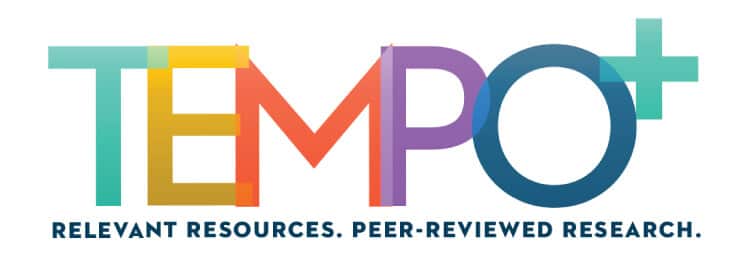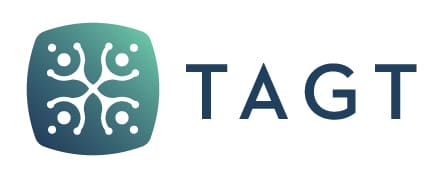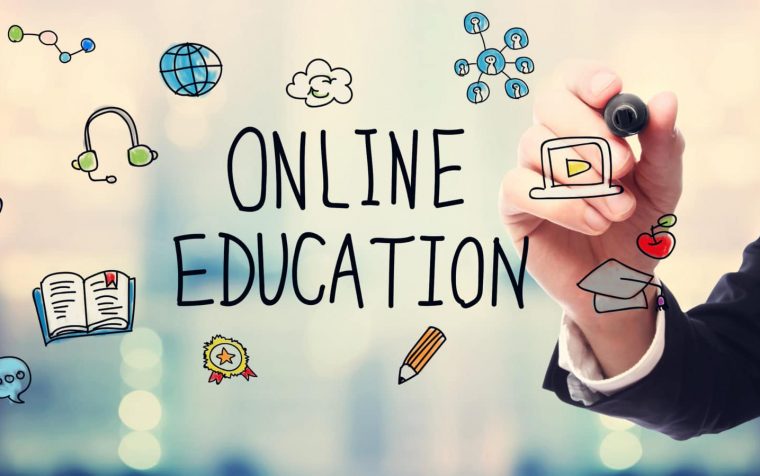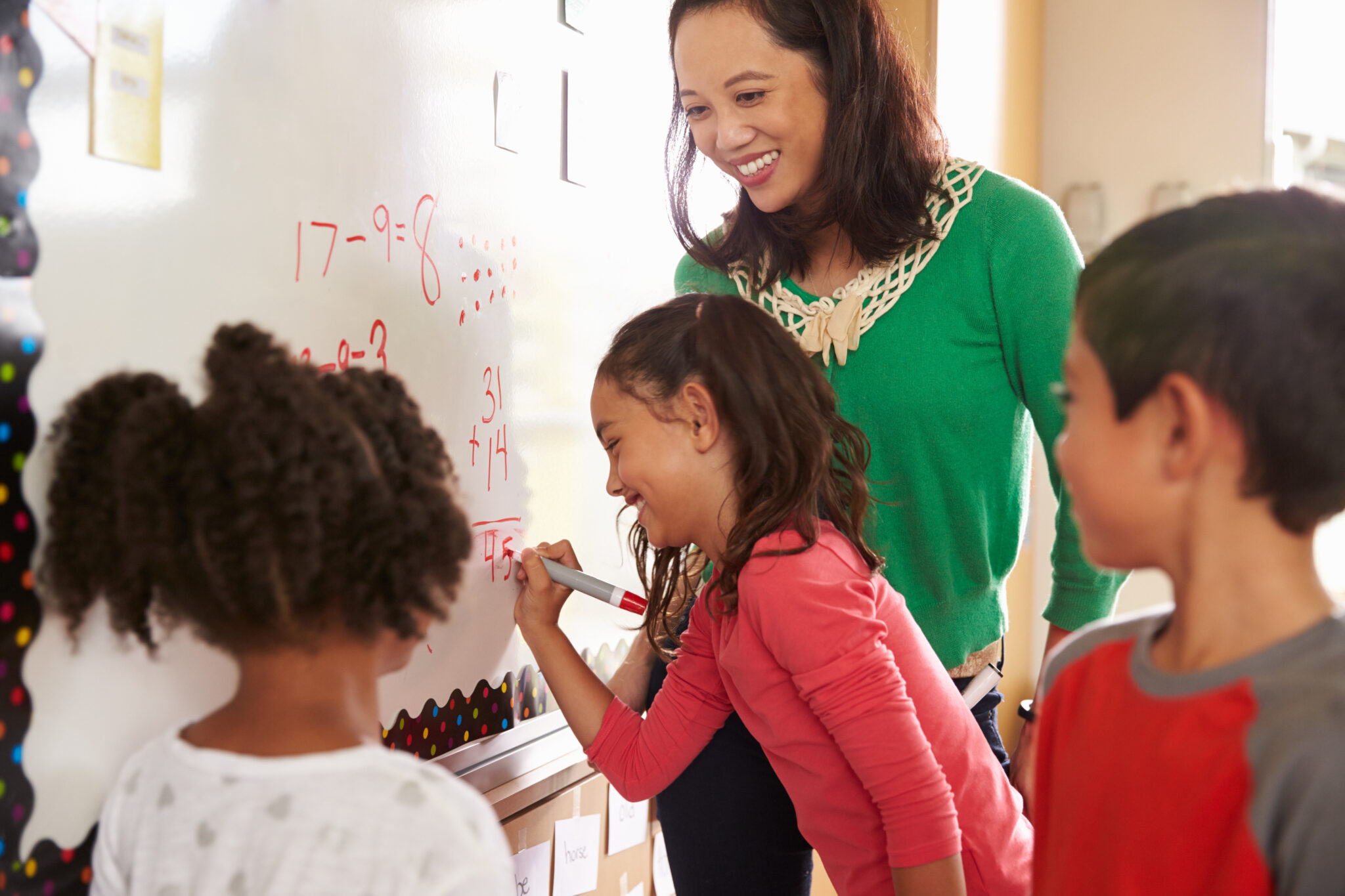Over the past 2 years, educators across the country have undertaken mammoth tasks to ensure continuity of education for students during the pandemic. During this period of unprecedented disruption, educators were initially thrust into virtual classrooms with little or no preparation as remote instruction was implemented. Teachers had to learn new technology and ways to engage students in a virtual environment quickly. One gifted and talented (G/T) coordinator shared that she felt like she had gained 3 years of technology training in the first 3 months of remote instruction. In addition to the heavy load placed on teachers’ shoulders, schools faced enormous challenges to ensure access for both faculty and students to technology devices, software, and adequate internet service. This article will discuss results from a mixed methods study that explored the experiences of more than 300 elementary teachers of the gifted during the first year of the pandemic (Guilbault & McCormick, 2022).
Virtual Instruction and Gifted Learners
Online learning involves the use of the internet and virtual interactions in the learning environment. This may include synchronous or asynchronous experiences, such as video recorded lectures, message boards, discussion forums, and live video conferencing. Other related terminology used in the literature includes e-learning, distance learning, virtual learning, and hybrid or blended learning. Definitions vary according to the nature of instruction and technology used as well as location of the student and instructor (i.e., distance learning implies a geographical distance, while virtual learning can also occur within a brick-and-mortar school building).
Online and distance learning is not new. In the late 1990s, the Johns Hopkins Center for Talented Youth (CTY) launched its accelerated enrichment programs for distance learning using CD-ROMs, and several universities launched their first online courses. (Some of today’s G/T teachers may remember learning advanced math in middle school using the CTY Descartes Cove discs in a Dell desktop computer!) There are more than 2 decades of research on effective online teaching practices (e.g., Harris-Packer & Ségol, 2015; Li et al., 2020; Simonson et al., 2011). However, very few of these studies focus on elementary students, and even fewer have been conducted on the use of virtual instruction with gifted and talented learners. Previous studies on virtual learning with gifted learners have shown some positive benefits, such as the ability to provide adaptive, accelerated, and individualized content; the opportunity to bridge the gap between access to advanced content especially for students in rural schools; student satisfaction; and increased motivation when the online environment allows students to pursue independent research projects of personal interest (Adams & Cross, 1999; Periathiruvadi & Rinn, 2012; Potts, 2019; Swan et al., 2015; Wallace, 2009).
Recent studies that have emerged during the pandemic highlight similar benefits but also some areas of caution for educators (Chowkase et al., 2022; Desmet et al., 2022; Duraku & Hoxha, 2020; Guilbault & McCormick, 2022; Wolfgang & Snyderman, 2022). Wolfgang and Snyderman (2022) reported that, in Pennsylvania, gifted education support services decreased in frequency during remote instruction. Parents and educators wished that more opportunities had been provided for synchronous sessions to foster student social interactions. Duraku and Hoxha (2020) studied the social and emotional impact of the pandemic and school closings on gifted learners. They discovered that gifted students felt increased stress at home, anxiety, and feelings of isolation and loneliness during remote instruction. For gifted learners who show heightened sensitivity to global concerns, the weight of the pandemic, illnesses and deaths around them, social isolation, loss of jobs in their families, and observing the way adults in authority made decisions around safety were difficult to process. These issues bring to light the importance of social-emotional lessons and mental health support as we, as educators, move forward.
G/T Teacher Adaptations During the Pandemic
We (the authors) explored the experiences of elementary teachers of the gifted during the first year of the pandemic. More than 300 elementary G/T teachers in 31 states took part in an online survey, and 23 G/T teachers volunteered to take part in focus groups. Results of this study shed light on the challenges and creative solutions employed by G/T teachers during this unique time.
There are many ways that G/T teachers adapted to meet the new demands of their roles during the first year of the pandemic and continue to adapt today as schools have reopened to serve students with face-to face-instruction and concurrent or hybrid learning. Several key challenges faced by educators include (a) the rapid pace of change; (b) a technology learning curve; (c) being pulled away from typical duties and time with identified gifted learners; (d) student mobility, attendance, and engagement; (e) lack of planning time to convert resources to digital formats or create new lesson plans and media; and (f) meeting the social and emotional needs of gifted students and families. A discussion of a sample of findings related to these challenges and adaptations follows.
Learning New Technology
Although many districts had a learning management system (LMS) in place prior to school closings, teacher training in these systems was often optional, resulting in only those with an interest in technology or who were already comfortable with technology taking advantage of these professional learning opportunities. Elementary teachers reported that they rarely used their district LMS for instruction prior to the pandemic. Initially, many tried to teach just as they did in person, but through Zoom, Microsoft Teams, or Google Meets. They soon realized that teaching online is vastly different from teaching in person, especially for elementary learners. As Tyra, one focus group participant, said, “The amount of work that eventually goes into teaching one lesson compared to what it was previously, I don’t think can be understated” (April 22, 2021). Strategies had to be adapted, and technology tools needed to be quickly mastered by both teachers and their students. This required additional time, a luxury most did not have as they dove into this new learning environment.
There was not a choice of whether to teach online or not when schools first closed. Remote instruction was essential to the continuity of teaching and learning and supported families working from home. However, most elementary educators are not trained to teach online (Archambault et al., 2016). Online student learning depends on teacher competencies with information and communications technology (ICT; Branch & Dousay, 2015; Ferrari, 2012). According to Ferrari (2012):
Digital Competence is the set of knowledge, skills, attitudes (thus including abilities, strategies, values and awareness) that are required when using ICT and digital media to perform tasks; solve problems; communicate; manage information; collaborate; create and share content; and build knowledge effectively, efficiently, appropriately, critically, creatively, autonomously, flexibly, ethically, reflectively for work, leisure, participation, learning, socialising, consuming, and empowerment. (p. 3)
Effectiveness of ICT depends on the technology competencies of teachers and how well they incorporate it into their pedagogical practices (Branch & Dousay, 2015). According to Branch and Dousay (2015), effective online learning requires attention to design and careful planning of instruction using an organized model for development of instruction. Educators who were already adept at technology or who had opted into their district’s technology professional learning opportunities were at an advantage during this shift, but they still experienced anxiety and stress from their daily lives and from caring for family members during the pandemic.
Virtual Support Networks
G/T teachers as well as district G/T coordinators formed virtual support networks. These were informal meeting spaces using tools, such as Google Hangouts, Microsoft Teams, or Google Classroom, where materials were shared, collaboration occurred, questions were posed and answered quickly, and educators had a safe place to vent and support each other. An unexpected benefit from this experience was that these virtual spaces accelerated collaboration across schools and districts that otherwise may not have happened. G/T coordinators and G/T teachers are often the sole gifted education specialist in their building (or central office); they tend to be isolated except for occasional meetings or staff development. In one survey response, a teacher shared, “The collaboration with my team members has increased. Hearing how things are working (and not working) coupled with what they’ve done in a variety of situations has been helpful. It eased the feeling of being alone” (April 29, 2021). These networks were essential during the pandemic when time was a luxury, and the only thing constant was change.
Changes to Services
The academic year following initial pandemic closings (2020–2021) was also interrupted, with periods of in-person and virtual instruction, shifting modalities, schools open for part-time face-to-face instruction, hybrid instruction, and schools closing again at times as local cases of COVID-19 spiked in their communities. The 2020–2021 academic year was a period of constant pivoting. In addition to the challenges experienced by teachers when schools closed (and when they reopened part time and had to close again!) was the impact that this had on gifted learners’ service delivery models. During remote and hybrid learning, service delivery models were modified to accommodate the new environment, teaching loads, and other priority school needs. Elementary teachers of the gifted, who are not typically teachers of record (meaning they are considered a resource position without a regular group of students assigned to them for the entire day), were often asked by their administrators to shift their duties during the pandemic. As Sarah, one focus group participant, alarmingly shared:
A lot of districts are suspending the gifted programs for the year because they said we need to focus on maintaining cohorts. And so, they redeployed the gifted teachers and other special teachers to teach in classrooms for the year. And not surprisingly, one district is not going to have a gifted program next year. They decided they didn’t need it. (April 28, 2021)
G/T teachers had to cover colleagues’ classes to provide breaks, help with teacher planning, cover lunch duty to help with social distancing requirements, and perform other duties outside of their job description, resulting in less time and direct contact with their G/T students. During the current academic year, districts across the nation are feeling the impact of teacher resignations or medical leaves, resulting in critical teacher shortages and substitute teacher shortages, adding to the pressures that educators and administrators face regarding workload, burnout, and scheduling.
As schools continually had to adjust how services were provided, the pandemic brought to light the ongoing issues of inequity in schools. Teachers in our study voiced this concern. As stated by one focus group participant, “I’m in a Title I district, and it was obvious that there wasn’t an equitable distribution of technology. The school I am in did not have one-to-one [devices]. So, we had this huge learning curve, but we did it” (May 4, 2021). Priorities for students in low-income areas and from at-risk populations included efforts to address access to necessary resources and technology. The technology gap may have contributed to increased excellence gaps for advanced learners from vulnerable populations.
Social and Emotional Needs of the Gifted
Although there is debate in the field as to whether gifted learners are more prone to psychosocial difficulties or whether their giftedness makes them more resilient (Neihart et al., 2016), it is clear that teachers of the gifted were in tune to the social and emotional needs of their students and families during the pandemic. In one survey response a teacher shared, “Suspending academic requirements has helped. We’ve focused on serving the social and emotional learning of kids. I created a virtual family room to create a soothing environment for children to meet with others” (March 31, 2021). Some teachers reported that students were missing at times and may have had to move out of district or out of state to live with other family members due to caregiver illness or death, or job losses in their families. Checking in with students and families occurred frequently, and teachers of the gifted provided materials, information, and enrichment packets that families could use with their gifted learners at home. Some educators were grateful to publishing companies, universities, talent search networks, and their district advanced academic coordinators for sharing free resources, such as lesson plans, ready-to-go materials and PowerPoints, digital versions of textbooks, and webinars. Many reported that students’ affective needs took priority to cognitive needs during the shift to emergency remote instruction.
Lessons Learned
Focus group participants (n = 23) and survey participants (n = 310) were asked to share what they thought worked well for elementary gifted students during virtual instruction and what they would like to put into practice in a post-pandemic world. One positive aspect gleaned from the focus groups and survey results was that G/T teachers expressed a new perspective on how they can use technology, even in a face-to-face classroom or in a hybrid setting, to truly individualize instruction and increase student engagement and motivation. As one teacher wrote in their survey response, “I have grown as an educator and have worked harder to connect to my students. I thought I was very good at technology, but I had lots of room for growth!” (April 8, 2021). Teachers discussed using independent study projects, small breakout rooms for collaboration, self-paced lessons, flexible grouping, and enrichment extensions. Other suggestions of what worked well that they would like to maintain in their teaching practice include:
- more student choice and flexibility through technology and LMS modules,
- curriculum compacting and content acceleration with online learning,
- using compacted time gained for students to pursue self-directed research projects,
- virtual field trips,
- Google Classroom,
- guest experts and virtual speakers,
- online simulations,
- one-on-one student conferencing online,
- breakout groups for like-ability discussion and collaboration, and
- cross-grade and cross-school grouping for instruction using the LMS and video technology.
Conclusion
With so many unknown factors—such as how to group gifted learners in an online or hybrid classroom, how to meet required contact minutes, how to legally hold remote gifted education placement meetings, how to securely screen and test students remotely for gifted program identification, when schools would be able to safely reopen full time, and how to best support the unique social, emotional, and cognitive needs of students with gifts and talents—teachers of the gifted were poised to use their creativity and resourcefulness but were dependent upon the decision making of their school and district administrators. In general, participants in this mixed methods study were optimistic about future post-pandemic possibilities and their ability to use the strong technology skills they had gained to provide effective virtual or hybrid instruction for gifted learners.
The Texas State Plan (Texas Education Agency, 2019) sets a goal for services for G/T students that they “will demonstrate skills in self-directed learning, thinking, research, and communication as evidenced by the development of innovative products and performances that reflect individuality and creativity and are advanced in relation to students of similar age, experience, or environment” (p. 1). To meet this goal during the pandemic, teachers of the gifted were thrown into a stressful situation that required them to rapidly adjust and adapt to new technology and communication tools. Constant changes took place regarding policies and procedures, instructional formats, LMS, and other new technologies. To address the needs of gifted learners, it was apparent that educators needed professional learning in technology tools, support and flexibility in scheduling and class sizes, and overall administrative support for their own emotional needs and well-being.
Although many of the teachers included in the study had vast teaching experience and advanced degrees, when it came to technology skills there was a great deal of variance. Working with gifted students during the pandemic allowed teachers the opportunity to try out new skills, strategies, and gain new competencies in the world of online teaching. As time passed, teachers learned how to move from survival mode into truly providing continuity of gifted education services that allowed students to thrive. They formed support networks and collaborated with colleagues in new and innovative ways. In reflecting on what worked, what did not work, and what parts of virtual instruction they would like to see remain in a post-pandemic world, teachers of the gifted looked toward the future, and were hopeful that the status quo would not remain. As Gina, a focus group participant, shared, “I believe this pandemic has stretched all of us to find new and innovative ways to teach and learn. This can be the beginning of a new way to view education. This could be an exciting new horizon” (May 5, 2021).
References
Adams, C. M., & Cross, T. L. (1999). Distance learning opportunities for academically gifted students. Journal of Secondary Gifted Education, 11(2), 88–96. https://doi.org/10.4219/jsge-1999-618
Archambault, L., Kennedy, K., & Freidhoff, J. (2016). Accountability for students in K–12 online learning: Perspectives from Michigan stakeholders and beyond. Online Learning, 20(3), 126–139. https://doi.org/10.24059/olj.v20i3.975
Branch, R. M., & Dousay, T. A. (2015). Survey of instructional development models (5th ed.). Association for Educational Communications and Technology.
Chowkase, A. A., Datar, K., Deshpande, A., Khasnis, S., Keskar, A., & Godbole, S. (2022). Online learning, classroom quality, and student motivation: Perspectives from students, teachers, parents, and program staff. Gifted Education International, 38(1), 74–94. https://doi.org/10.1177/02614294211060401
Desmet, O., Crimmins, D., Seigfried-Spellar, K. C., & Gentry, M. (2022). AME+Cyber: Evaluating the online delivery of a holistic cyber-related talent development program. Gifted Education International, 38(1), 3–24. https://doi.org/10.1177/02614294211054361
Duraku, Z. H., & Hoxha, N. (2020). The impact of COVID-19, school closure, and social isolation on gifted students’ wellbeing and attitudes toward remote (online) learning. In S. Meinck, J. Fraillon, & R. Strietholt (Eds.), Impact of the COVID-19 pandemic on education and wellbeing (pp. 130–169). UNESCO.
Ferrari, A. (2012). Digital competence in practice: An analysis of frameworks. Joint Research Centre, Institute for Prospective Technological Studies, Seville.
Guilbault, K. M., & McCormick, K. M. (2022). Supporting elementary gifted learners during the COVID-19 pandemic: A survey of teaching practices. Gifted Education International, 38(1), 115–137. https://doi.org/10.1177/02614294211070075
Harris-Packer, J. D., & Ségol, G. (2015). An empirical evaluation of distance learning’s effectiveness in the K–12 setting. American Journal of Distance Education, 29(1), 4–17. https://doi.org/10.1080/08923647.2015.990768
Li, Y., Wang, K., Xiao, Y., & Froyd, J. E. (2020). Research and trends in STEM education: A systemic review of journal publications. International Journal of STEM Education, 7(11), 1–16. https://doi.org/10.1186/s40594-020-00207-6
Neihart, M., Pfeiffer, S. I., & Cross, T. L. (Eds.). (2016). The social emotional development of gifted children: What do we know? (2nd ed.). Prufrock Press.
Periathiruvadi, S., & Rinn, A.N. (2012) Technology in gifted education: A review of best practices and empirical research. Journal of Research on Technology in Education, 45(2), 153–169. https://doi.org/10.1080/15391523.2012.10782601
Potts, J. A. (2019). Profoundly gifted students’ perceptions of virtual classrooms. Gifted Child Quarterly, 63(1), 58–80. https://doi.org/10.1177%2F0016986218801075
Simonson, M., Schlosser, C., & Orellana, A. (2011). Distance education research: A review of the literature. Journal of Computing in Higher Education, 23(2–3), 124. https://doi.org/10.1007/s12528-011-9045-8
Swan, B., Coulombe-Quach, X.-L., Huang, A., Godek, J., Becker, D., & Zhou, Y. (2015). Meeting the needs of gifted and talented students: Case study of a virtual learning lab in a rural middle school. Journal of Advanced Academics, 26(4), 294–319. https://doi.org/10.1177/1932202X15603366
Texas Education Agency. (2019). Texas state plan for the education of gifted/talented students. https://tea.texas.gov/Academics/Special_Student_Populations/Gifted_and_Talented_Education/Gifted_Talented_Education
Wallace, P. (2009). Distance learning for gifted students: Outcomes for elementary, middle, and high school aged students. Journal for the Education of the Gifted, 32(3), 295–320. https://doi.org/10.4219/jeg-2009-855
Wolfgang, C., & Snyderman, D. (2022). An analysis of the impact of school closings on gifted services: Recommendations for meeting gifted students’ needs in a post-COVID-19 world. Gifted Education International, 38(1), 53–73. https://doi.org/10.1177/02614294211054262
